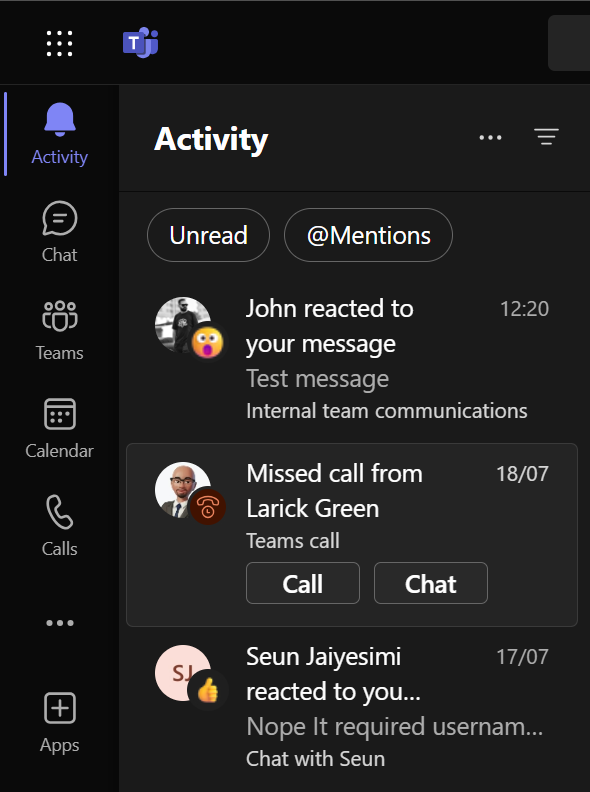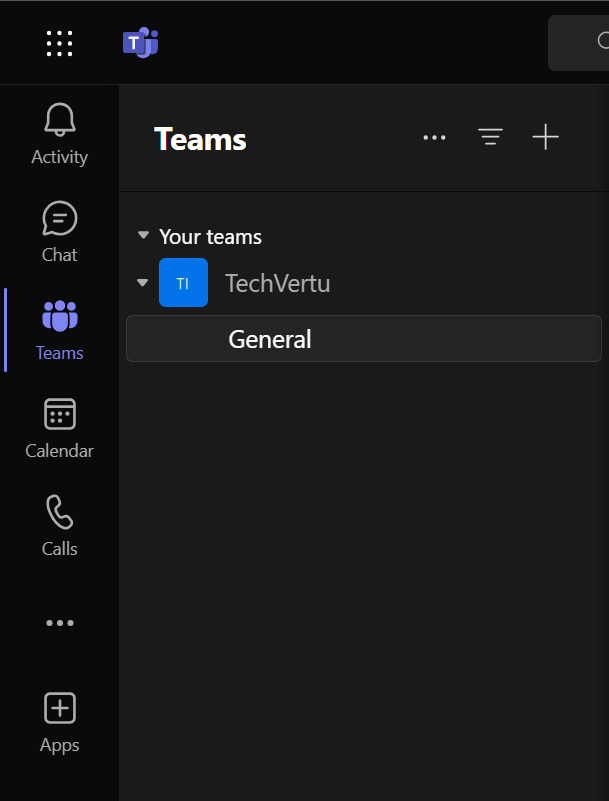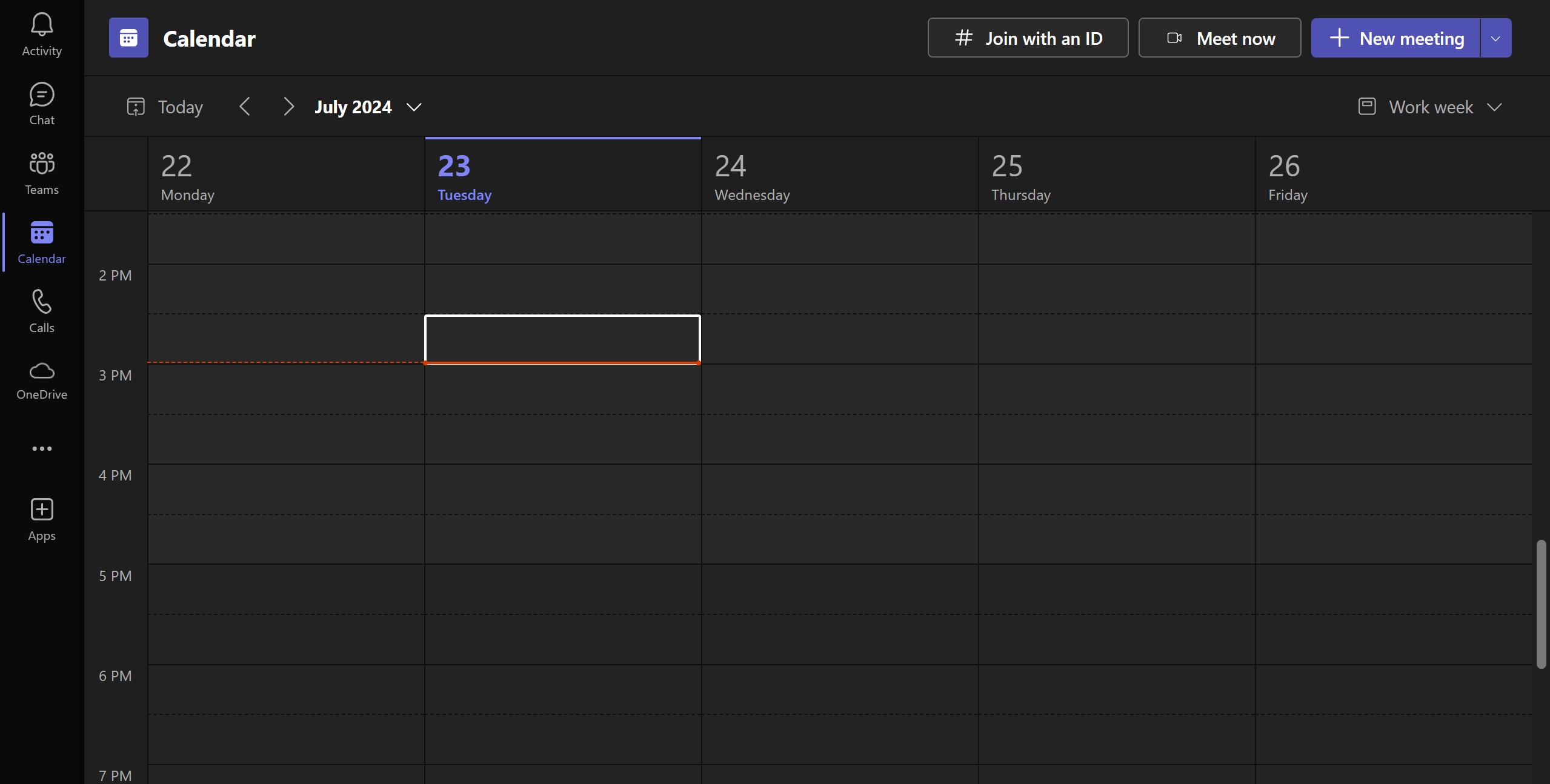Microsoft Teams Tutorials, Getting the Team Involved
Microsoft Teams is a great tool that comes with the Office 365 package. Its multi-purpose functions help you collaborate and contact your colleagues. It is integrated with Office, so you can view your calendar and schedule meetings saved in your Outlook inbox, share Excel and Word documents, and store items in a group SharePoint folder.
You can also read:
Video tutorials for Microsoft Teams
Teams – getting started
- Activity: Catch up on missed calls, meeting invitations and unread messages directly from your Feed.
- Chat: Start chatting with your fellows or immediately start a chat campaign using the Chat function.
- Channels: Use Leverage Teams to set aside specific channels for file sharing, discussion on text-based platforms and group meetings.
- Calendar Sync: Seamlessly connect your Teams calendar with Outlook for effective arrangement of time and scheduling. Alternatively, use Teams as a phone for calls if available.
- Files: The Files section provides quick access to recently used and shared documents. It can also be easily integrated with widely known cloud storage services like OneDrive, Google Drive, or Dropbox for better file availability and sharing.
Microsoft Teams basic & overview
Activity
Use the Activity feed to keep up to date with your communication. In this section, you will receive notifications on missed calls, meeting requests, unread messages, and other important events, ensuring that nothing slips past your notice.

Chat
It is effortless to interact with co-workers using instant messaging. Enter the list of suggested contacts or start a new chat by clicking on “New Chat”. You can communicate with external users through email as long as their Office 365 license allows for such communication.

Teams & channels
Create and use Channels to collaborate on files, engage in text-based chat with your colleagues and host meetings with these groups.

Calendar
Your Teams calendar is synced with Outlook, so your entries are the same on both. You can use the calendar to schedule meetings with individuals or your Teams.

Calls
If this feature has been enabled, you can use Teams as a phone

Files
You can view the most recent files that you have shared and files you have downloaded recently through Teams. You can also use Files to connect to your Cloud storage, such as Microsoft’s own OneDrive or others like Google Drive and Dropbox.

Creating your team in Microsoft Teams
To get your team up and running in Microsoft Teams, create a team, add people, and add channels.
Create a team
- Go to Teams > Join or create a team.
- Here, you can either form your own team or join established ones.
- Choose “Create a new team” and decide whether to start from scratch or create based on an established group.
- Choose “Private” if you want members to have to ask to join and “Public” if open access is appropriate for your company.
- Give your team a name and an optional description.
- After this, click “Create” to finalise the setup.
Customise and manage your team
- Notice the ellipsis (…) next to your team’s name and click on it for additional options.
- From there, click “Manage Team” to easily access Members, Channels, Settings and Apps all in one place.
- In ‘Settings,’ create a profile for your team by uploading an avatar to personalize the workspace of some personality.
- Following these procedures will quickly set up your team in Microsoft Teams and lay the foundation for effective collaboration and communication within the organisation.
Managing your team in Microsoft Teams
As a team owner, you can add new members and guests, change members into owners, manage channels and settings, and archive a team that’s no longer in use.
Add members
- To add members, go to the team’s name in the team’s list, select ‘More options,’ and click on “Add member“.
- Type in an invite under a person’s email address or work account and assign them an appropriate display to collaborators outside the organisation.
- Provide an email address and add a display name to ensure easy identification.
- Invite Individuals and Groups: To increase the number of people on your team, ask colleagues, external third parties, or whole contact lists to join.
- Guest Invitations for Externals: For external collaborators, enter their email addresses and give them friendly names to facilitate clear identification.
- Manage Team Membership: Please use the “Add” and “Close” buttons to quickly add new team members and confirm their additions.
Remove members
- If an individual’s responsibilities no longer suit the needs of your group, then a person can quickly be removed.
- Look for the team’s name under “teams”.
- Click more options and then manage the team.
- From the members tab, look at their names and locate the one you want to delete, then click on the “X” icon.
Add team owners
- In the teams list, go to the team name and select “More options
 “.
“. - Select ”Manage team“.
- In the “Members” tab, under “Role“, select the down arrow and change “Member” to “Owner“.
Manage channels
- Go to the team name and select “More options
 “.
“. - Select “Manage team“.
- In the “Channels” tab, select “Auto-favourite” for any channels you want to ensure appear in everyone’s channel list.
Note: You can favourite up to 10 channels for your team.
Archive a team
- Select the “Manage team” icon
 at the bottom of the teams’ list.
at the bottom of the teams’ list. - Select “More options“
 on the far right of the team name.
on the far right of the team name. - Select “Archive Team“.
Note: The conversations and files in the team become read-only once you archive it. You’ll still be able to search through it for stuff you need—you can even keep it as a favourite.
Manage and add apps
- Go to the team name and select “More options
 “
“ - Select “Manage team“.
- In the “Apps” tab, you can manage the apps your team uses.
- Select “Get more apps” to find and install a new app.
Change team settings
- Go to the team name and select “More options
 “.
“. - Select “Manage team“. From there, you can access your team’s “Settings” tab, which lets you:
- Change the team picture.
- Set member permissions (like allowing them to create, update, or delete channels and tabs).
- Enable @team or @[team name] mentions in a channel.
- Set permissions for guests.
- Enable team members to send GIFs, emojis, and stickers.
Scheduling Teams meetings in Microsoft Teams
Select Calendar to view your appointments and meetings for the day or work week.
Creating a new meeting
- Select “New meeting“.
- Enter a title for your meeting and, if appropriate, type a location.
Select a time to start and end the meeting, and add details if needed. - Enter names in the “Invite people” box to add them to the meeting.
Note: To invite someone outside your organisation, type in their email address, and they’ll receive an invite to join as a guest—even if they don’t have Microsoft Teams. - See everyone’s availability in the “Attendees” list and, if needed, choose a suggested time or select “Scheduling assistant” to see more available times in a calendar view.
- Under “Select a channel to meet in“, select the drop-down arrow to manage your meeting’s privacy settings:
- Select “None” to keep your meeting private.
- Select a channel to open the meeting to team members.
If your meeting gets posted in a channel, it’ll appear under the Posts tab. Team members can set agendas, share files, or add comments.
Joining Teams meetings in Microsoft Teams
- In a Teams meeting invite, select “Join“.
- You have two choices:
- Join Microsoft Teams Meeting: Enter a meeting from your Teams meeting invite.
- Dial-in number and conference ID: Use these if you need to call into the meeting.
- Choose the audio and video settings you want.
- Select “Join now“.
Join a Teams meeting on the web
Don’t have the Teams app? You can still join a Teams meeting.
- In your email invite, select “Join Microsoft Teams Meeting“.
You can also use a dial-in number and conference ID from the email to call in. - You have two choices:
- Download the Windows app: Download the Teams app.
- Join on the web instead: Join a Teams meeting on the web.
- If you select to join via the web, type in your name and select “Join now”.
If you have a Teams account, select “sign-in” to view the meeting chat and more. - Choose the audio and video settings you want.
- Depending on the meeting settings, you’ll go to a lobby where attendees can admit you.
How to meet in Microsoft Teams
Turn a conversation into a meeting with a few clicks. Add audio, video, and share your screen.
Start a meeting
- To start a meeting, do one of the following:
- Select “
 ” in a new conversation.
” in a new conversation. - Select “
 ” in an existing conversation to keep all that conversation’s context.
” in an existing conversation to keep all that conversation’s context.
- In your video preview, enter a name for the meeting, and select “Meet now“.
- Select the names of the team members you want to invite to the meeting.
You can also type a phone number, which is a good way to add people outside your organisation who aren’t using Teams.
Join a meeting
- Look for the “meeting notification icon
 ” in a conversation to find a meeting.
” in a conversation to find a meeting. - Select “Jump In” to participate in the meeting.
Share screen & recording the meeting
- Select the share “screen icon
 ” to show your screen to the other people in the meeting.
” to show your screen to the other people in the meeting. - Select the More Options icon (…) to record the meeting. When the video is ready, you’ll be emailed so you can view, edit, and share it with others.
Post a message to multiple channels in Microsoft Teams
- In a channel, start a message and select “Format“.
- Choose the message type you want: “New conversation” or “Announcement“.
- Select “Post in multiple channels” and then “Select channels“.
- Choose which channels to cross-post to.
You can share wherever you’re a member. - Select “Update“, and your selected channels appear in the post.
- Select “Everyone can reply” to let anyone respond to your post, or select “You and moderators can reply” to restrict responses to just you and the moderators.
- Type a message and select “Send“.
Your posts appear in the selected channels.
Working in channels
By default, every team gets a “General” channel, which is a good channel to use for announcements and information the whole team needs. To add more channels:
Create a channel
- Select “More options
 ” next to the team name.
” next to the team name. - Select “Add channel“.
- Enter a name and description for your channel.
You can build a channel around a topic, project, department name, or whatever you like. - Select “Automatically show this channel in everyone’s channel list” if you want this channel to be automatically visible in everyone’s channel list.
- Select “Add“.
How to use channels for work in Microsoft Teams
Conversations in channels can be seen and searched for by the entire team.
You can participate in conversations, like or save important ones, mention specific people so they see your message, and even edit a file that’s been added to the conversation.
Reply to a message
- Select

- Reply, add your response, and press Enter.
Like a message
- Select
 next to a message to show you liked it.
next to a message to show you liked it. - Select
 to save a message for later. Select your picture to see your saved messages. (The New Microsoft Teams doesn’t have this feature.
to save a message for later. Select your picture to see your saved messages. (The New Microsoft Teams doesn’t have this feature.
Start a new conversation in a channel
Enter your message in the “Start a new conversation” box, and press Enter.
Get someone’s attention on the channel
- Type “@” in front of a team member’s name while you’re creating a message to include them in the conversation.
The person will receive an @mention notice.
You can @mention a team or channel if your admin enables it.
See where you’ve been mentioned
Look for the circle on the left next to Teams and Activity to see the number of times your name has been mentioned in a conversation.
Co-edit a file
- If a document has been uploaded to a conversation or Files, select the file to open it.
- Select “Edit“, and then select where to edit the file in the app or online.
- Select “
 ” to continue the conversation while viewing or co-editing the file.
” to continue the conversation while viewing or co-editing the file.
Overview of teams and channels in Microsoft Teams
In Microsoft Teams, teams are groups of people brought together for work, projects, or common interests.
Teams are made up of channels. Each channel is built around a topic, like “Team Events,” a department name, or just for fun. Channels are where you hold meetings, have conversations, and work on files together.
The tabs at the top of each channel link to your favourite files, apps, and services.
Add a tab
Select the “plus sign” next to the “tabs“.
For example, “add Planner to create a project board for tracking team tasks“.
Pin a channel
If you have many channels, mark important channels as favourites to make them easy to find.
- To pin a channel, select the three dots
 to the right of the channel in your list, and select
to the right of the channel in your list, and select 
- To remove a pin, select the three dots
 next to the channel name, and select
next to the channel name, and select 
How to use channel notifications in Microsoft Teams
Customise the notifications for each channel you participate in so you don’t miss out on important updates.
Show and hide channels in Microsoft Teams to keep up with important channels and hide the ones you don’t need.
Customise channel notifications
- Select “More options
 “.
“. - Select “Channel notifications“.
- Choose the settings you want such as new post notifications or channel mentions.
- Select “Save“.
Notifications appear based on your preferred settings.
Hide or show a channel
- From within the channel, Select “More options
 “.
“. - Select “Hide“.
- If you want to unhide the channel, select “Hidden channels” and then select “Show“.
How to use mentions in Microsoft Teams
Send a co-worker or entire team a notification to get their attention when you use @mention.
Get one person’s attention
- Type a message in a reply or start a new conversation.
- Type @ and the person’s name.
- Select the person’s name you want to mention.
- Finish your message and select “Send“.
Get an entire team or channel’s attention
- Type a message in a reply or start a new conversation.
- Type “@team” or “@channel“.
- Select the team or channel you want to mention.
- Finish your message and select “Send“.
How to create and format a post to start a conversation in a channel
- Type a message.
- Select “Format“.
- Format your post with the following options:
- Add a subject
- Bold
- Bulleted list
- Insert link
- Select “Send“.
How to save posts and messages in Microsoft Teams
- To save a message or post, select “Save message
 “.
“. - just to the right of the text.
- To see a list of your saved messages, select your profile picture at the top of the app, then choose “Saved“.
Or type “/saved” in the command box at the top of the screen.
How to show your screen during a meeting in Microsoft Teams
In Microsoft Teams, you can show your desktop, a specific app, a presentation, or any file while in a meeting.
Sharing your screen and files
- Select “Share
 “
“ - Select what you want to share:
- “Desktop” lets you show everything on your screen.
- “Window” lets you show a specific app.
- “PowerPoint” lets you show a presentation.
- “Browse” lets you find the file you want to show.
- After you select what you want to show, a red border surrounds what you’re sharing.
- Select “Stop sharing” to stop showing your screen.
File collaboration in Microsoft Teams
Working in Microsoft Teams lets you work on files together at the same time. Also, messages about the document stay with it and will show up in your team conversations.
- In a team conversation or the “Files” tab, select “More options
 ” next to the file.
” next to the file. - Choose if you want to edit the file in Teams, on your desktop, or online.
- Edit the file. Coloured flags show who else is working on it with you.
- Select “Start conversation” to add a message about the file.
- Type your message or @mention someone and select “Send“.
How to attach files in Microsoft Teams
Anywhere in Teams, look for the “paperclip icon  ” to Attach a file.
” to Attach a file.
Alternately:
- Go to the “Files” tab.
- Select “Upload“.
- Select single or multiple files from the device computer or OneDrive for the Business account.
- Select “Open“.
How to manage your workflow with Microsoft Teams Planner
Create a board with Planner to keep you and your team organised in Microsoft Teams.
- In a channel, select “Add a tab“.
- Select “Planner“.
- Select “Create a new plan” or “Use an existing one“, and then select “Save“.
- With a Planner board, you can:
- Create buckets
- Add and assign tasks
- Update tasks
- Chart progress
How to send emails to a channel in Microsoft Teams
If you need to communicate by email, you can send it to everyone in a Teams channel.
Get and copy a channel’s email
- Select “More options
 “.
“. - Select “Get email address“.
- Select “Copy“.
- Paste the copied email address into a new email.
- Select “Send“.
Forward an email to a channel
- Open the email you’d like to forward.
- Paste the copied email address into the To line of your email.
- Select “Send“.
How to find and filter files in Microsoft Teams
Filter files to find recent documents, ones that have been created or edited in your channels, or downloaded to your computer.
- Select “Files” and choose a filter:
- Recent: Recent files you’ve viewed or edited.
- Microsoft Teams: Files created or edited across your channels.
- Downloads: Files you’ve downloaded from Teams. Select the Open Downloads Folder to find them.
- OneDrive is connected by default. However, you can choose another cloud storage provider to use in Teams. Examples include Dropbox and Google Drive.
Microsoft Teams on mobile
Having Microsoft Teams stay synced across your computer and mobile devices means you can stay connected, even outside of the office.
All you have to do is download the Microsoft Teams app and sign in with your work email address and password; it really is that simple! If you are using an iPhone, you can get Teams from the App Store.
If you are using an Android device, you can install it from the Google Play Store. Alternatively, you can use this link on a phone to go to Microsoft’s web page where you can find the download links for your device below:
Now that Microsoft Teams is installed, sign in with your work email address and password to start your mobile Teams experience.
You have the exact same features and abilities as you would have on your mobile. Below are a few short highlights to show just how productive you can be when using Teams, even from your mobile phone!
